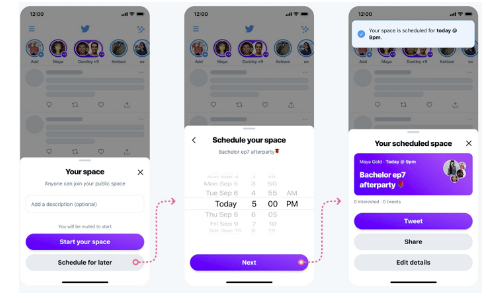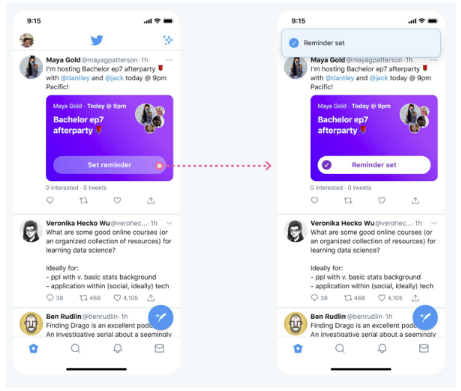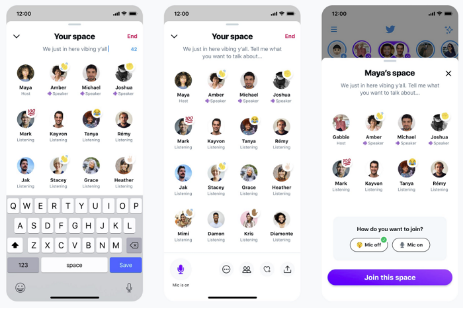Twitter Unfolds Test Pool for Spaces, Previews New Scheduling Features
Amy Harrison
|
/home/dmc/public_html/wp-content/themes/DMC/single-news.php on line 24
https://www.digitalmarketingcommunity.com/news/?newstype=">Digital Marketing
Will Twitter Spaces eventually supersede, also stunt the growth of Clubhouse? Well, it’s too early to say just yet, however, definitely, Twitter is working fast to develop its Spaces option because it seeks to ride the wave of popularity of the new audio social trend.
Additionally, over the last week, Twitter has continued with that push, expanding Spaces access to more users as well as testing out new features, like Space scheduling and labeling tools, in order to give users more options with their audio chats.
However, the biggest new addition (still in development) is scheduling, that new addition will provide more ways to host as well as managing your audio Space.

As shown above, Twitter users will be able to schedule an upcoming Space, which they’ll then be able to tweet out to their audience. Not only that but also when you do tweet out a link to your upcoming Space, people will be able to sign-up for a reminder via that tweet.

More About Twitter Spaces:
Further information about Twitter Spaces, means this will help to get more people to your Space, also to raise awareness of your discussion. We can see that Twitter’s efforts are continuous, as it also working on Space discovery, which is another key element. Right now, Clubhouse is ahead of Twitter in this respect, as it provides the capacity to move between rooms and see what other discussions are happening at any given time. That is good because it gives you the ability to see other topics you might be interested in too.
As with live broadcasts, Twitter doesn’t make in-progress Spaces easy to find, but it is looking to develop new options on this front. Moreover, Twitter continues to work on its participant listings, so users can view who’s listening into a Space at any time.
Early prototype 🙏 (a couple of bugs to fix 😅) https://t.co/YajWbLlKhC pic.twitter.com/ndNAcQc9Uh
— Rémy (@rmbrgn) February 28, 2021
Besides that, Twitter is working on new options for Space titles, giving admins more control over how their Space is displayed.

The reason Twitter hasn’t announced an expanded launch yet is that there’s still a way to go in finalizing the full functionality of the option.
However, with interest in audio social rising, Twitter’s working to evolve fast, which could eventually see it steal a lot of Clubhouse’s thunder if it can provide an equal if not better experience.
On the other side, the advantage Twitter has in this respect is scale – while people are now working to build audiences on Clubhouse, most users already have established followings on Twitter, which they could use to expand their reach with their audio rooms much quicker.
But then again, the more people who have access, the more overall room quality becomes a concern, and that will then put increased reliance on algorithms to help guide users to the rooms of most relevance to them.
We can remember that Twitter’s history with algorithm recommendations isn’t great, however, Clubhouse’s systems are not amazing as well, so again, it’s too early to say which will come out as the better option in any definitive way.
But looks like the opportunity is now there for Twitter to take. It has more advanced systems (Spaces is built on the architecture of Periscope), more experience and capacity in moderation tools, and as noted, can provide a much broader audience reach (Twitter Spaces also has no limit on the number of people who can listen in to any given room).
On the other side, Clubhouse is also evolving, but if Twitter can get its option right, it could quickly become the leader in the new audio social space, which is the goal for Twitter.
That is, of course, Facebook inevitably comes out with its version. Expect this to be a hotly contested element throughout 2021.
Warning: Undefined array key "sidebar_ads" in /home/dmc/public_html/wp-content/themes/DMC/functions/helpers.php on line 824


